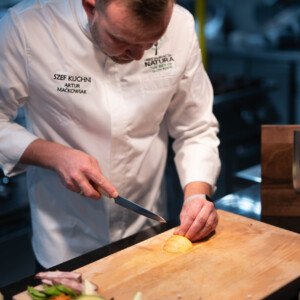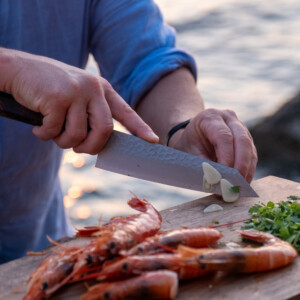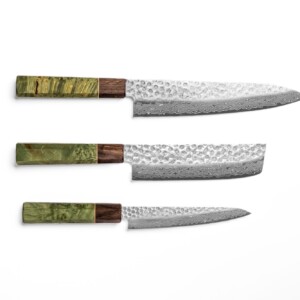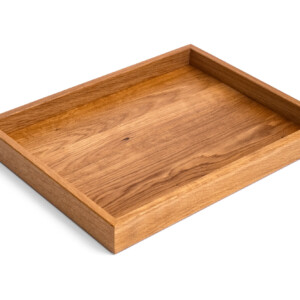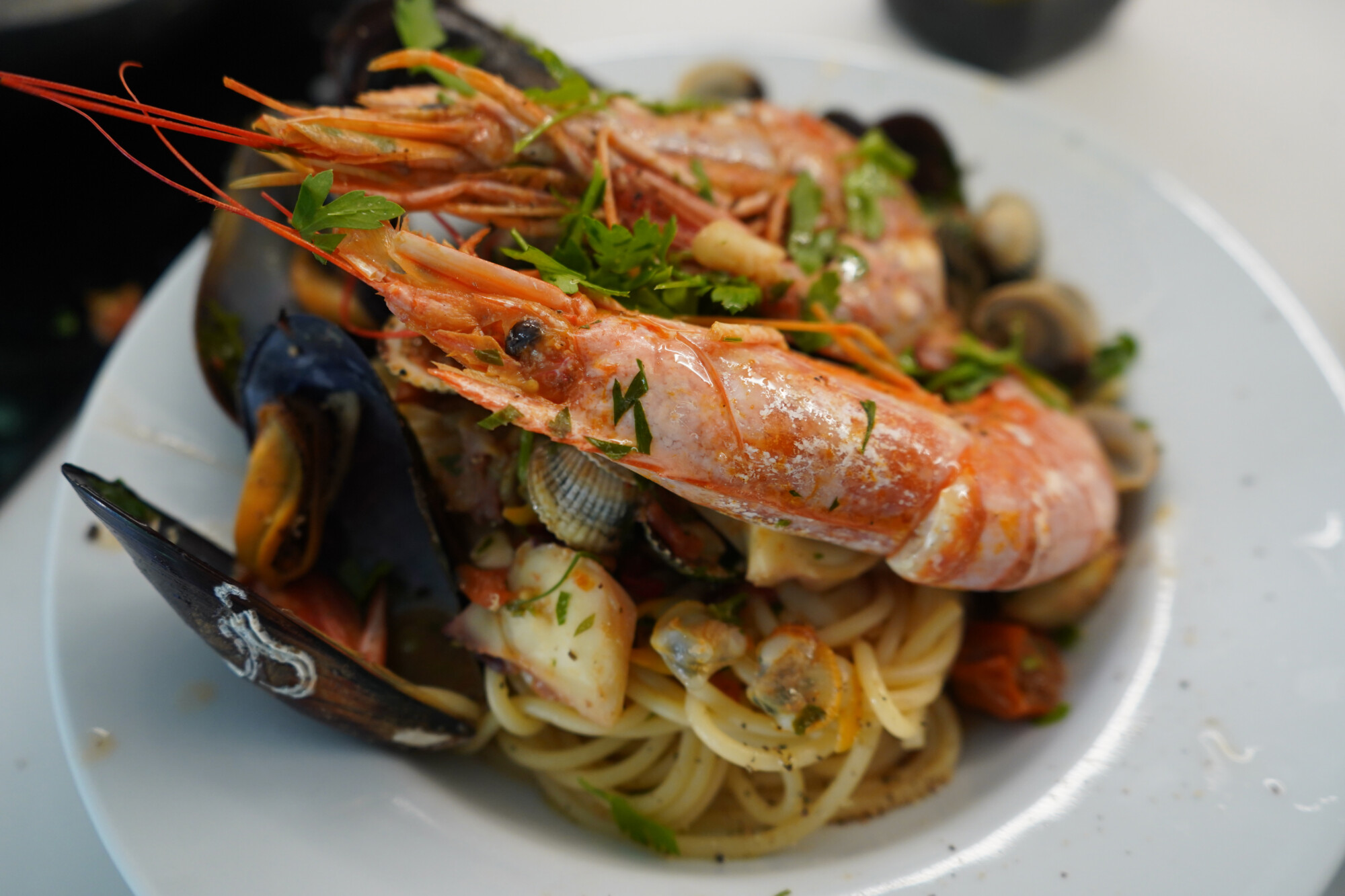If you think about it, cutting boards are very versatile and one of the most valuable accessories in your kitchen. It acts at any given moment as a chopping block, food preparation surface, or serving station—sometimes all three. Therefore it’s essential that this can’t-live-without kitchen accessory be made of a high quality, everlasting material. Wood is a leading candiate for such but are all types of wood suitable?
Professional chefs swear by wood because its more impact resistant and sanitary than plastic, gentler on knife blades than a harsh bamboo, and much cheaper than marble or granite. But not all types of wood are good options for cutting boards. You should know that certain wood species are better suitable for chopping tasks than others.
What to look for in wood for wooden chopping boards

When selecting a cutting board or a butcher block, consider the following 5 key attributes of a wood species:
- Janka hardness rating: Nearly every material has its hardness ranking and so does wood. The higher the Janka hardness rating of a wood (measured in pounds-force), the harder and more resistant it is to scratches, dents, or dings from knives. Opt for a medium hardness like maple or cypress over softwoods like pine.
- Toxicity: All woods that produce edible fruits, nuts, leaves, or sap are considered to be food-safe. Exotic woods like Purpleheart, while aesthetically pleasing, should be avoided. They often contain toxins that may leach out of the wood and into food placed on the surface.
- Porosity: Opt for closed-grain woods, that is pores invisible to the naked eye, to keep liquid or bacteria from entering the cutting surface and cause mold growth, wood warping, or stains. For that reason bamboo, although very economical, is not the best option due to its surface porosity. The smaller the pores, the better. Open-grained woods (pores visible) such as oak and ash are a poor choice because they soak up moisture like a sponge and quickly become a fertile ground for bacteria.
- Conditioning: Food-grade mineral oil such as beewax should be applied to wood cutting boards and butcher blocks to suppress wood’s natural tendency to shrink and warp or split as surrounding humidity decreases. For an average use home cook, that should be quarterly conditioning after cleaning wooden cutting boards. Keep in mind that some woods shrink more than others, so you’d need to oil these woods more frequently.
- Cost: The prices of store-bought cutting surfaces vary widely depending on the wood used to make them. Bamboo tree grows extremely fast therefore it tends to be the cheapest material. Usually, cutting boards fall at the lower end of these ranges and butcher blocks at the higher end. Alternatively, if you have the right tools, you might shop for the hardwood on your own and create a DIY cutting board.
The best materials for wooden cutting boards
Factoring in the above criteria, we’ve compiled a shortlist of the best woods for a cutting board. See how they stack up below.
1. Cypress

Cypress wood like Japanese aomori hiba includes more of Hinokitiol (an ingredient kills bacteria) than any other woods, which contains anti-bacterial and anti-mold properties. In addition to the effect, hinokitiol has the odour eliminating any ammonia smells. That is why cutting boards made of cypress have been getting good reputations for a long time and they are widely present in Japanese homes and used by Japanese professional chefs used as superior quality boards. In addition to that, this wood is better for your cutting edge, which means the sharpness of your kitchen knives lasts longer and the surface remains hygienic. It also has a long-lasting rich, refreshing wooden smell which will fill your home with a sense of being surrounded by nature.
2. Walnut

Walnut is another hardwood that’s an excellent choice in the kitchen. Its dark colour is one of its main appeals as stains aren’t seen as easily. Just like maple, walnut is technically a hardwood, which means it is durable enough to sustain the blade, but it is also soft enough not to blunt or damage your knives. Although it’s softer than maple it will still hold up well over time. Walnut falls in the “just right” category of hardness that’s perfect for both board and knife maintenance, just like Japanese Aomori Hiba. This close-grained wood is also food-safe, another reason why it is used all the time in cutting boards and other kitchen items.
3. Maple

Not everyone may like citrus-sweet smell of cypress. For those, both soft and hard maple make for excellent cutting surfaces. Hard maple is the industry standard among cutting board makers: It’s more scratch- and impact-resistant than beech or teak but not so hard that it will dull your knives. This food-safe, closed-grained hardwood has smaller pores than even the alternatives listed below, making it the-go-to choice as it blocks bacteria, moisture, and stains. The downside is its stain creation. When it does form stains, they’re hard to hide on its off-white to amber-yellow surface. Maple wooden cutting boards and butcher blocks also cost more than beech and cypress and shrink more than teak and walnut as humidity decreases, so you should be conditioning maple cutting surfaces regularly; ideally monthly to bimonthly.
4. Beech

This food-safe, closed-grained hardwood is kind to your knives and offers stellar scratch and impact resistance outdone only by cypress wood like aomori hiba and hard maple. Its small pores make it nearly as effective as aomori (and more effective than teak or walnut) at warding off bacteria, moisture, and stains. However, its cream to pink or brown colour easily gets stained. Beech is, after bamboo, generally the cheapest material, but they shrink more than any of the three other woods, so condition your cutting board monthly.
5. Teak

Teak holds up better to scratches and impacts than walnut but less so than beech, cypress or maple. But as a tropical closed-grained hardwood, teak prices can exceed £150-£300 per a medium size board. Yet, its high silica content, makes your knife dull from frequently cutting. Teak shrinks less than any of the other three options for cutting boards, so you can get by conditioning it every 6 months. Unfortunately, its large pores make it more welcoming to bacteria, moisture, and stains than cypress, maple, or beech.
End-grain or edge-grain?
There is another factor to consider – the design. Within the category of wooden cutting boards come, you’ll find two design varieties: end-grain and edge-grain. These cuts aren’t just for show; each pattern boasts a different level of durability. Read this article for more details.
What woods in cutting boards should you avoid?
To sum up, you should be aware of the materials that are food-toxic. In terms of hardness, porosity and taste when considering which ones to use for cutting boards. we would avoid open-pored woods like ash and red oak, which will be harder to keep clean from food stains. Pine might impart a resinous taste, and it’s soft so will show cutting scars from knives more easily than a harder wood like maple. we’d stick with the old close-pored standbys for cutting boards: maple, walnut, beech, cypress (like aomori hiba) and teak are all great as wooden cutting boards options. Overall, the most important thing with a cutting board is that it does its job well — it should be hard enough but not too much to dull your knives, washable, nontoxic and dimensionally stable.





